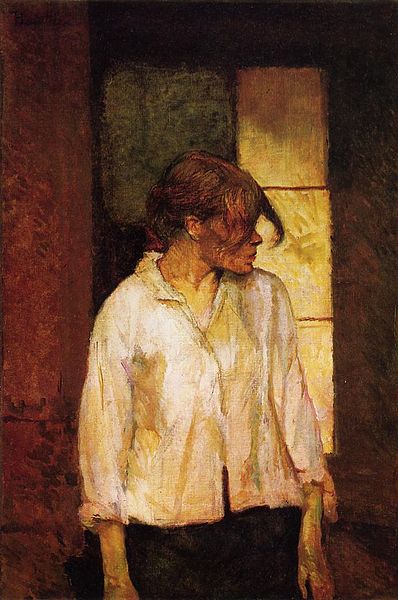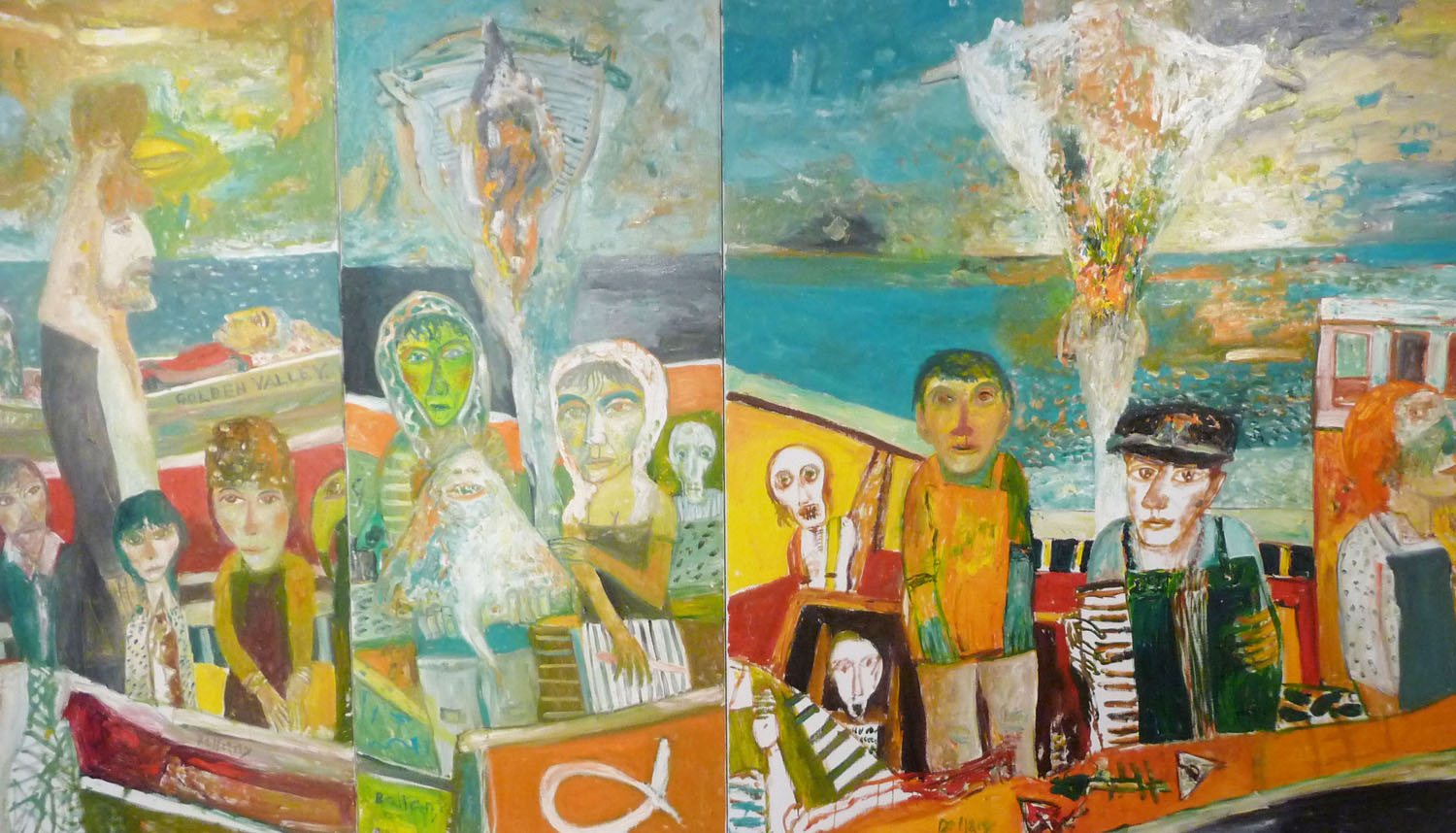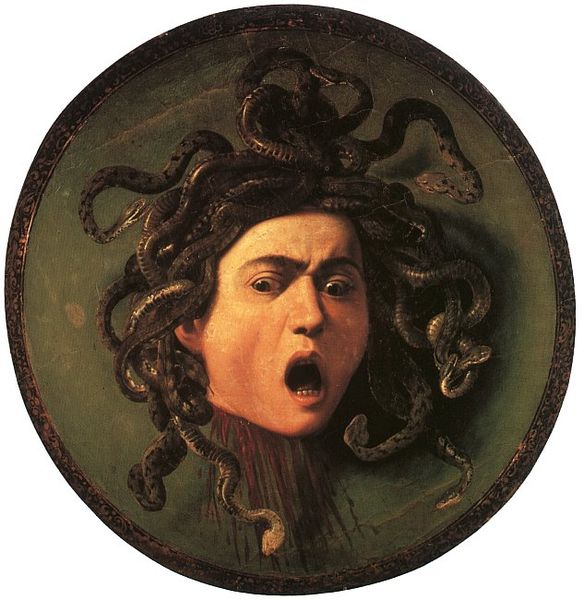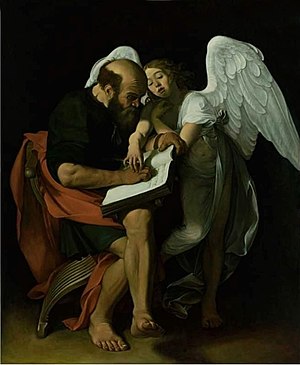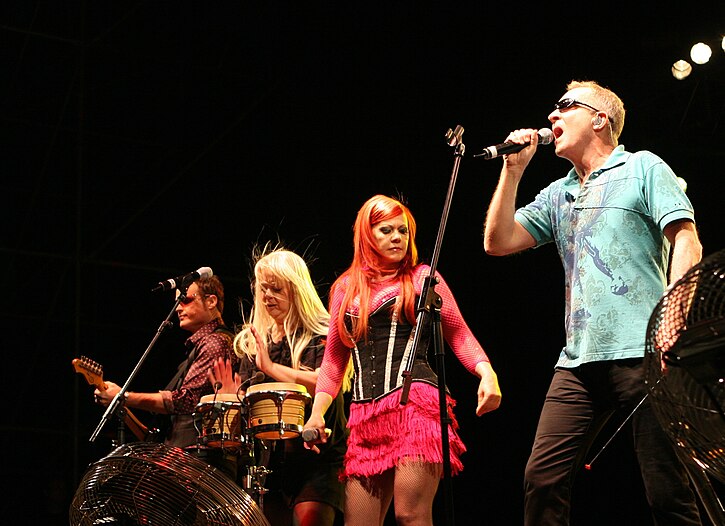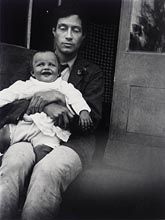...with Playmobil.
Of course.
More nonsense here.
Friday 30 August 2013
Top Ten Paintings
Now, because it's Friday, I thought I'd compile a list for a bit of fun. A list of my Top Ten Paintings.
Obviously there are a lot of paintings out there, so perhaps I should lay down a few criteria here.
- Only one painting allowed on the list from each artist (otherwise it would just be a list of Caravaggios). (Oops - I've given one away, haven't I?)
- I must have seen the real thing - not just as a illustration.
- These have to be paintings that when you see them, they have a real emotional punch. You look and look at them and can't take your eyes of them.
- You want them.
So here goes - in reverse order.
Oh, and I'll leave you to come up with the artists, titles, dates and location of the paintings. They're all pretty easy. Answers on Monday.
Actually, this has been quite an interesting exercise. No landscape, and they're all pretty much red.
Of course, it could all be a different selection of ten tomorrow, or next week. And I'm sure there's just masses of paintings that I just can't bring to mind right at the moment, which I will be kicking myself for having forgotten about.
What would you choose? Feel free to post your lists.
Thursday 29 August 2013
Death of John Bellany
I was sad to read on the front page of The Herald today of the death of one of Scotland's most famous artists, John Bellany.
His work was strongly rooted in his Port Seton fishing community childhood, and was full of eerie mystical characters who seemed to be involved in some sort of great mythical elemental struggle, often portrayed in his characteristic palette of strong reds and yellow hues.
John Bellany, Celtic Allegory (Oil on canvas)
This is The Ventriloquist, from 1983.
John Bellany, The Ventriloquist © the Artist's Estate / Bridgeman Art Library. All rights reserved
Forming out of agitated brushwork, a skeletal figure holds up two skate, which seem to be acting as the mouthpiece for the dead person. But it is difficult to make out what they are trying to communicate. It is as if those who have been through the rigours of storms and who have died at sea are trying to speak, but can't quite be understood. It is as if the dead are amongst the living, and the past is continually within the present.
Thus all that is in Bellany's life finds its expression and outpouring in his very personal work.
The 1980s were a time of great personal crises for Bellany, including health problems of three heart attacks (one outside his own exhibition) and a liver transplant. Famously, he even painted whilst he was in hospital, gravely ill. His illness became a subject for artistic exploration, even though he was near death.
John Bellany Self-Portrait with Oxygen Mask (from ʼThe Addenbrookes Hospital Seriesʼ) (1988) © the Artist's Estate/ Bridgeman Art Library. All rights reserved
Now a statement on his official website says:
"It is with great sadness that we announce the passing of a true Scottish giant. At seventeen minutes past seven on the evening of Wednesday
August 28 John passed away, in his studio, surrounded by his family. He was clutching a paint brush in his hand as he took his final breath. His passion was life and he painted as if each day was his last."
It's quite a way to go - in the studio, brush in hand, as his family stands around him. It's such a powerful, romantic, cinematic image, that it could be one of his own paintings.
He was a very prolific artist, always painting, painting, and drawing, pouring all the passion and energy of his tumultuous, event-filled life into the art.
There's a really nice little film about Bellany HERE.
It was made in February this year, and has art historian Alastair Sooke sitting cross-legged on a couch interviewing John Bellany about his retrospective at the National Gallery of Scotland, called A Passion for Life.
Poignantly, the film ends with Bellany exclaiming, "I love being alive!
"I'm looking forward to the retrospective at 90!" enthuses Sooke, who's clearly captivated by Bellany and all his intense, dark energy.
"I can't promise that, but I'll do my best, replies Bellany, with a rueful sigh.
He died yesterday at 71.
Wednesday 28 August 2013
'Water, Water' - Paintings off to Bristol
That's a consignment of work off to Bristol for a show entitled 'Water Water' at the Lime Tree Gallery.
As the name suggests, it's a water-themed show, which gives great scope for all manner of rivers, streams, seas and oceans - one of my favourite subjects!
Here's a couple of little drawings in mixed media - pastel, acrylic and charcoal on handmade paper, very textural - that are going to be in the show. It's good to show something a little different now and again.
They're both of the boats at the little harbour at Penberth Cove down on the south coast of Cornwall. It's a beautiful little harbour, very secluded and peaceful, with a really old-fashioned timeless feel about it.
Boats and Creels, Penberth Cove (10 x 10)
Rowing Boat at Penberth Cove (10 x 10)
The exhibition opens with a champagne preview on Thursday 12th September, 6 - 8.30pm. So if you're in the Bristol area and would like to go along and see them, please feel free as you'd be very welcome!
In the meantime, here's a link to the paintings in the show HERE.
If you'd like a full-colour catalogue and an invite to the show, then please contact the gallery HERE.
Tuesday 27 August 2013
Peter Sellers Mini?
Now, this is a tad off-topic, but I was wrapping some paintings in the studio today and had the television on.
Playing in the background was an old British comedy from 1963, Doctor in Distress, with James Robertson Justice and Dirk Bogarde.
(You could tell it was a 50 year-old film because at one point, dishy Doctor Dirk examined a female patient's chest. "But doctor, it's my ankle that's hurting." The scene ended with chirpy music, rather than a sexual harassment case and counselling.)
(You could tell it was a 50 year-old film because at one point, dishy Doctor Dirk examined a female patient's chest. "But doctor, it's my ankle that's hurting." The scene ended with chirpy music, rather than a sexual harassment case and counselling.)
However, what suddenly caught my attention was this beauty.
www.imcdb.org
Yes, it's an A-reg 1963 Mark One mini. But take a look at that coach-work!!!!!
In case you can't make it out, its wicker-work painted onto a cream shell. A cream shell!

www.imcdb.org
Blimey, that's just like the Radford mini customised by coachbuilders Hoopers for Peter Sellers in 1963!!
Except his was black, so you could actually see the wicker.
Here's a close-up of the workmanship. That's not painted on, that's actual wicker that has been sanded down until paper-thin, and then applied to the bodywork. No wonder it cost £2600 (four times the price of the basic model). (You could buy a house for £4000).
Picture: Jeroen Booij
But wait a minute - that's not what's going on in the car Dirk is driving. Have a closer look.
www.imcdb.org
Yep, that's a different kettle of inferior fish.
That's an actual piece of B&Q wooden trellis stuck on to that car (or the 1963 equivalent, which would have been purchased at a very nice ironmongers in the high street rather than a giant orange warehouse on some soulless industrial estate). It's far less intricate, and you can see how thick it is, especially round the door handle. It's all a bit Barry Bucknell .
So what the film makers did was fake-up a mini in order to make the movie really hip and right-on by referencing a very current iconic 1963 moment - namely the glamorous celebrity Peter Sellers with his achingly groovy customised mini, an event which was splashed all over the news. Famous people having nothing better to do than run around in cute fancy cars was a kind of seminal moment, signalling that the country was finally emerging from post-war rationing greyness and the threat of Cuban missile-crisis nuclear annihalation by letting its hair down and just having a bit of fun.
And what says 'frivolous fun' more than sticking a bit of wicker on your mini?
But now no-one gets that. Except very very sad mini people.
So in the meantime, lets just admire Dirk there with that sliding window, chain-pull door opening system and external rear-passenger window hinges, and think of 1963 which seems like a whole world away now, rather than just 50 years ago.
Painting in Northern Ireland
I'm just back from my annual trip to the Causeway Coast in Northern Ireland. The weather was very changeable, with rain, sun, fog and mist - so much the same as usual!
As well as meeting up with a lot of people while I was over there, my time was spent travelling about to take photos. There's many favourite spots that I return to, including the viewpoint above White Park Bay, just along from the Giant's Causeway. On a clear day you can see Scotland and the islands of Islay and Jura (not on that day, though :-().
When I arrived, I was slightly put out to find that my favourite spot, in front of my favourite clump of grass, had been taken by a large van.
Going round to investigate as to who should have the cheek to park on MY spot, I found another artist, working away.
This is Shaun O'Boyle, who lives in the van (which was a green VW until last year) and travels around, painting out of the back of it. He's very nice, and doesn't mind at all if you stop to chat to him. He has everything he needs in the camper, including an awning to protect him from the worst of the Irish weather, and works away in acrylic on canvas board using palette knives. He even took me into his van to show me his old dog, and all the mod cons inside.
Shaun used to be an accountant, but gave it all up to follow his dream of living as an artist. Like me, his background was one where being an artist was the most ridiculous thing you could possibly have announced you wanted to be, like suggesting a career as a lion tamer or an astronaut. Artists were something from the realms of fantasy, like unicorns. But here we all are.
So there Shaun is, out in all weathers, doing exactly what he wants to do . He's my new Artist Hero. He makes a living selling his paintings to visitors, who take his work all around the world, so if you're in County Antrim and see him, say hullo to him. He even has a WEBSITE you can visit.
Anyway, I elbowed Shaun out the way (needs must), and took my photos.
This is the magnificent sweep of White Park Bay (with my favourite bit of foreground).
Wednesday 21 August 2013
Red Azaleas in The Herald
I spotted this in The Herald newspaper on Saturday.
It's my painting Red Azaleas, featured in the Style section of The Herald Magazine.
It's my painting Red Azaleas, featured in the Style section of The Herald Magazine.
You can see it above the fireplace, and the flowers in the painting have been echoed by a floral display of pink and white lilies on the coffee table.
The painting has a canvas size of 32" x 32", so it's easy to see how it fits well into a contemporary home, providing an accent of colour.
And here's the painting itself, in case you can't quite make it out in the newspaper photo!
Judith I Bridgland, Red Azaleas, Oil on canvas 32 x 32
If you think that this painting would look just as good in your own home, then it so happens that there's a limited edition giclee print of this painting available. The prints come in various sizes.
To order, just go online at The Bay Attic or The Atholl Gallery.
Just to be a little different, there's also a companion print to this, Red Azaleas and Yellow Poppies, available through the same links.
Judith I Bridgland, Red Azaleas and Yellow Poppies, Oil on canvas 32 x 32
Monday 19 August 2013
Caravaggio at the Edinburgh Festival Fringe
I was through at the Edinburgh Festival on Saturday to take in some of the Fringe action.
First up it was an early morning dip into the murky depths of the dark world of the painter Caravaggio, in Castration on a Tennis Court at the Symposium Hall. This was a tale full to bursting with pimps, priests, prostitutes and painting, presented in an engagingly effortless, chatty and endlessly knowledgeable style by TV art historian and cerebral hottie Andrew Graham-Dixon.
He's the chap was on BBC4 recently, riding a bicycle whilst doing a piece to camera about the Dutch Golden Age. What a guy. Here's his oddly radioactive picture from his website, as he illuminates every corner of our cultural darkness.
(Apparently, according to his website, you can actually hire him, for your own private tour. You can even take him abroad. Or get him to give you advice in order to make the 'right aesthetic and financial choices'. I wonder how much he costs...?)
And now here was AGD in Edinburgh, the real thing, straight from the late-night recesses of our television screens, hopping onto the stage armed merely with his book and a cup of coffee, and nary a lecture note or a lecturn in sight (nor any strange radioactive rays).
He launched into a story about the reaction of Keith Richards (of the Rolling Stones) on seeing Ottavio Leoni's drawing of the 25 year old Caravaggio. Here it is.
"He looks like a bad boy!" rasps AGD, doing Keef, "If he were alive now, he'd be a Rolling Stone!" He likes doing an impersonation or two, does AGD.
Now, one of the key people who helped AGD's research for his book Caravaggio: A Life Sacred and Profane was none other than the Papal Devil's Advocate (for there is such a job description), a chap called Sandro. He's the guy who dishes the dirt on any prospective saints by trawling for trash in the Vatican Archives. For the last 32 years, he has spent his lunch hours going through several million records in the Archives on his own personal quest, in the hope of finding rubies in the dust - namely papers which mention Caravaggio.
So far, he's found a couple of hundred, which must mean a hit rate of about one new document coming to light every six weeks. Just enough to keep you searching. The things which have come to light include an inventory made by Caravaggio's landlady in Rome, detailing the contents of his room - his swords and daggers, his chamber pot, his 12 books - but not the titles of the 12 books. Chinks of light in the darkness, and the eternal frustration of the ommissions. She also noted that he'd messed up the room by knocking a hole in the ceiling - the possible secret of the dramatic lighting effects of Caravaggio's chiaroscuro...?
AGD has effortless fluid command of the myriads of names, dates and details, and the skill and energy to tell a tale. This story is one of darkness, passions, violence, danger, and the rule of the street. Life as a painter on the cusp of the 16th and 17th centuries in Rome was survival of the fittest in the gutters, gritty, brutal and tough. And yet a painter's job was to communicate the vision of the light of heaven from the very midst of all this profane darkness, to bring religion to the masses by picturing the divine. No wonder Caravaggio's work was full of darkness and light, and the chiaroscuro of contrasts and contradictions; death and life, opulence and poverty, the sacred and the profane.
The brutality and brevity of life hit Caravaggio from a very young age. When Bubonic plague swept through Milan in 1576, his family lost nearly every male member. Father, uncle, grandfather - all were gone in days. Before Caravaggio was six years old, all his male role models were wiped out, and the dead were piled up in the streets.
No wonder when he painted a self-portrait, it was like this.
The brutality and brevity of life hit Caravaggio from a very young age. When Bubonic plague swept through Milan in 1576, his family lost nearly every male member. Father, uncle, grandfather - all were gone in days. Before Caravaggio was six years old, all his male role models were wiped out, and the dead were piled up in the streets.
No wonder when he painted a self-portrait, it was like this.
Caravaggio, Medusa (Oil on wood) 1590, Uffizi
Here he is portayed as the Medusa, painted onto a curved shield, which has a handle across the back so you can hold it. AGD acted out the scene. In the legend, Perseus is going to slay the snake-headed monster Medusa. If he looks at her, he will be turned to stone, so he has the shiny round shield on his arm and can see the Medusa's image reflected in it. He reverses into the fray, sword flailing, and cuts off her head. As it flies through the air leaving streams of blood, in the last 12 seconds of consciousness Medusa can see her own death reflected in the polished surface of the shield.
It wasn't the last time Caravaggio would paint himself beheaded. By the time he was painting these sort of images, he had already seen much more brutal horrors right on the streets. Plague. Fights. Executions.
No wonder Caravaggio's art was all about 'making it real'. Real people. Real poverty. Real dirt. Real miracles. Miracles that are there for those who can see, not heralded by flights of angels. He used prostitutes as models (and was probably a pimp himself). In fact, here his model for the Virgin Mary was a drowned prostitute pulled from the Tiber.
Caravaggio, Death of the Virgin (1606, Louvre)
The swollen body of the Madonna proved to be such a stumbling block for the church of Santa Maria della Scala who commissioned The Death of the Virgin, that it was rejected. Thus it eventually ended up hung in an appallingly lit long corridor in the Louvre.
Caravaggio's colours were the colours of earth, made from actual earths and clays, not the expensive colours of church-controlled lapis lazuli. Thus he painted the Madonna in a red dress, not a blue one, as was the tradition.
His paintings are like film sets, like modern installations, using the real light flowing through the three dimensional space of the architecture of the churches in which the paintings were sited to become the divine light in the two dimensional paintings. The space within the paintings references the space in which we stand when we are looking at them (which is why it is so important to see the work in situ). Filmmaker Martin Scorcese compared 16th century Rome
to Hollywood, with winning of a commission for an altarpiece being
like getting the rights to make a movie.
In Caravaggio's blockbusters, which had the common masses of pilgrims buzzing round them like flies, he creates characters that people can actually identify with, that they might meet on the street. Thus, dirty-footed Saint Matthew is fallable and semi-literate,
Caravaggio, St Matthew and the Angel (1602, destroyed)
Saint Peter takes a huge amount of human effort to kill,
Caravaggio, Martyrdom of Saint Peter (Santa Maria del Popolo 1600)
Saul becomes like a newborn baby lying in the manger as he falls from his horse,
and the Virgin Mary's ascension into heaven is suggested not by cherubs, but by a void, filled with an impersceptible breath, a heat, the wave of a curtain in the back room of a house, leaving behind her heavy, swollen body sagging on the bed. People looking at the painting would recognise death when they saw it, as they would have seen it as a matter of course in their lives, and they would certainly recognise it here. This is mortal death, plain to see.
But the spiritual, the miracle, is there if you look carefully enough. Because, says Caravaggio, that's how it is in real life. The divine isn't about cherubs and gold and the trappings of religion. It's right down in the grime, it's real, it's happening all around, you're breathing it in, it's something real and alive and vital and everyday.
Similarly, there are signs of the miracle of the risen Christ in the Supper at Emmaus - but only if you can see them.
But the spiritual, the miracle, is there if you look carefully enough. Because, says Caravaggio, that's how it is in real life. The divine isn't about cherubs and gold and the trappings of religion. It's right down in the grime, it's real, it's happening all around, you're breathing it in, it's something real and alive and vital and everyday.
Similarly, there are signs of the miracle of the risen Christ in the Supper at Emmaus - but only if you can see them.
Caravaggio, Supper at Emmaus (1602, National Gallery London)
It's all in the shadows. The shadow behind Christ forms a halo, the fruit basked teetering on the edge of the table (between life and death) casts not the shape of the fruit, but the tail of a fish - the ixthus.
And the arguments! You wouldn't want to have been a waiter in Caravaggio's Rome - one waiter was assaulted by an artist for daring to serve a meringue that was too crunchy. Or was it not crunchy enough? And Caravaggio got into trouble for smashing a plate into the face of a waiter who brought him a dish of buttered artichokes rather than ones dressed with olive oil.
The fact that Caravaggio got into a fight over a buttered artichoke was no arty-joke. Sorry...
However, as AGD explained, there was a logic to Caravaggio's anger (and he was a man full of energy and anger and passion). In this case, the waiter was actually making a racial slur by insinuating that fine Roman olive oil was not worth wasting on butter-sloshing northerners like Caravaggio (Lombardians being famous for their love of lashings of butter and cheese). So Caravaggio smacked him in the face, gashing it open and knocking out teeth. You don't like my face? Well, no-ones going to like yours much once I've finished with it.
And now onto the subject of the whole talk - namely that castration on a tennis court. Caravaggio was never, it seems, beaten when it came to one-on-one fighting with a sword. And in this case, he killed man, on a tennis court - Ranuccio Tomassoni. Not that they were actually playing tennis, as AGD acted out for us, sweeping back his floppily unruly fringe once again in a gesture that annoyed my follically-challenged lecture companion. No, you could be put to death for holding a duel. Instead, this was a smokescreen - hold a game of tennis and pretend that a fight broke out, that it was a crime of passion. Oh, those hot-headed Italians. We squeaked in our comedy squeaky seats in excitement.
Caravaggio, it seems, was aiming for Tomassoni's groin, with the aim to castrate him, in an act of revenge appropriate to the nature of their dispute. However, in the split second that it took for the sword to pierce Tomassoni's groin, the course of Caravaggio's life was changed forever, and its downward spiral had begun. For the blade pierced the femoral artery, and the man bled out in seconds. According to accounts, the tennis court was awash with blood, fountains of it all over the place in shocking torrents, covering the onlookers; he was dead in moments.
By this time, we'd been going for an hour and twenty minutes, and the janitor was getting agitated about the next show coming on - so there we pretty much stopped. Not that there isn't about another 30 years worth of material (probably) which could seemlessly issue like unstoppable streams of silk from the lips of the prodigiously elephantine-memoried Mr Graham-Dixon.
Here he is afterwards, signing my copy of A Life Sacred and Profane whilst I burbled some complete and utter total nonsense.
Hey ho - never meet your idols, eh?
Later the same day, I met Rick Wakeman, and did pretty much the same thing.
Wednesday 14 August 2013
Edinburgh Paintings Online
If you'd like to see the paintings that are currently on display for the Edinburgh Festival at the Morningside Gallery, then click HERE to see them all.
Title: Fenced Fields by Farm, Fife
Artist: Judith Bridgland
Medium: Oil on Linen
ImageSize: 24" x 26"
The images show the paintings in their frames. As you can see here, the frames are bespoke hand-made and hand-gilded, with cream-coloured slips and glass. I prefer to glaze the paintings, as this is better for conservation purposes, preserving both the surface and the colour of the paint.
Monday 12 August 2013
Good Stuff
Last month I wrote about Goddess Debbie Harry of Blondie here, who's still rocking it out at 68.
Well, tonight it was another Third Age Wonder, the red-haired vision of space-punk cosmic kookiness that is Kate Pierson of the B-52s.
This woman is 65! 65!!! Cosmic thing indeed.
Yes, they may be older since I last saw them in the 90s at the Barrowland Ballroom - but then, aren't we all older? Although some of use aren't quite so bendy or indeed so fundmentally groovy. That's one inspirational woman.
Still singing about the girl from Ipanema going to Greenland, there was plenty of cosmic crustacea, robots, meteor showers, volcanoes, and of course lots of banging on the doors of love shacks from mini-skirted micro-beehived Kate, a strangely permanently-amused Cindy, and sprechgesang Fred.
Shake those maracas and party on!
Thursday 8 August 2013
Charleston Farmhouse - Bloomsbury Group Masterpiece
Whilst I was on my photo-taking trip round the south coast of England, I paid a visit to Charleston Farmhouse in Sussex with my cousin. I've visited it before, but I was dying to see it again as it's so inspirational.
Charleston Farmhouse was, from World War 1
onwards, the home and country meeting place for the writers, painters
and intellectuals who made up the Bloomsbury Group, including Vanessa Bell and Scots-born Duncan Grant (he of the Omega workshop). There was quite a lot of goings-on, artistic, intellectual and otherwise.
Here's Vanessa, circa 1910
Getty Images
and here's Duncan, who was apparently absolutely irrisistable to all and sundry.
(c) George Eastman House
What do you think...?
Now...it was a lively household, with many guests coming and going who were big names in the literary and artistic circles of the time, such as E M Forster and Roger Fry (with whom Vanessa had a relationship in 1911).
Vanessa Bell was married to Clive Bell. Duncan Grant was gay, with a series of partners/models, including his cousin Lytton Strachey, politician Arthur Hobhouse, economist Maynard Keynes, and David Garnett.
Vanessa had a baby in Christmas 1918, who was born at Charleston and weighed using the kitchen scales. Upon seeing her there, David Garnett (Grant's lover) declared 'I'm going to marry her!" In a rather creepy way.
The child, called Angelica, grew up believing Clive Bell was her father, but discovered at 17 that her father was in fact Duncan Grant (much to her distress).
Duncan Grant with Angelica Bell (c) The Tate Archive
And yes, Angelica then went on to marry David Garnett. Blimey!! Unbelievable. (And it's actually far, far more complicated than that - for more details read the article here.)
Despite Duncan's homosexuality, he and Vanessa were devoted to each other, and lived together until she died, in 1961, in the upstairs bedroom, looking out at the garden.
(The beds are surprisingly small and narrow....all things considered.)
So the household was a seething mass of love triangles, suicides and Communism.
Although the farmhouse was only rented, the group went to work decorating, embroidering, and printing pretty much every available part of the interior, as well as designing the garden, in a frenzy of creative outpouring. Plates, furnishings, textiles, ceramics, rugs, lampshades like collanders which cast a sparkly light, - you name it, they made it. Walls are stencilled. Fireplaces and doors are painted on. It's an eclectic, electric whirl of 60 years of creative energy. Although mentioning electrics, the wiring looks decidedly dodgy (although I was assured it's all been, er, checked...).
Here's the dining room, where Queen Bee Vanessa insisted on being mummy and sitting at the head of the table serving everyone at the strictly-timed evening meal. She liked to be the alpha female of the group.
I'm sure there were many heated debates between them all.
Can you imagine what on earth it must have been like to be invited there as a houseguest? You'd have to be on your toes not only to keep up with all the intellectualising, but also just wondering what exactly what was going on between everyone, and was there a lock on your bedroom door.
Here's the drawing room. It has lovely views into the garden, as if nature is coming into the room. In fact, a lot of the rooms are double aspect, and have a wonderful feeling of light about them, even though some of them have very dark grey painted walls.
Vanessa painted a lot of murals using circles as a motif. It's a very feminine symbol, like a full moon, or the circle of life.
This is Duncan Grant's studio. I have to say, as achingly desirable as it would be to have as a studio, is does have the feel of somewhere to sit and act the part of being an artist, rather than the sense of an active working studio. It's not exactly Frances Bacon's workplace.
Here's a detail of the lock on one of the doors.
The colours are pastel and chalky, like the soil of east Sussex itself. The paints were formed from ground pigment mixed with rabbit size glue in order to adhere to the surfaces on which they were applied.
This is the bathroom - even that's decorated.
(c) The Charleston Trust
The general bohemian feel of the household with all its complex intertwined relationship entanglements is probably summed up in this Charleston textile, an embroidered silk hanky.
University of Brighton
If you're ever near Eastbourne, then I do urge you to go. Check opening times first, and be aware that you have to go round in a small group as part of a guided tour. However, this is wonderful.
The whole place is inspirational, as it just has such a huge sense of energy about it. It makes you want to go off and paint all over your entire house!!
Subscribe to:
Posts (Atom)



